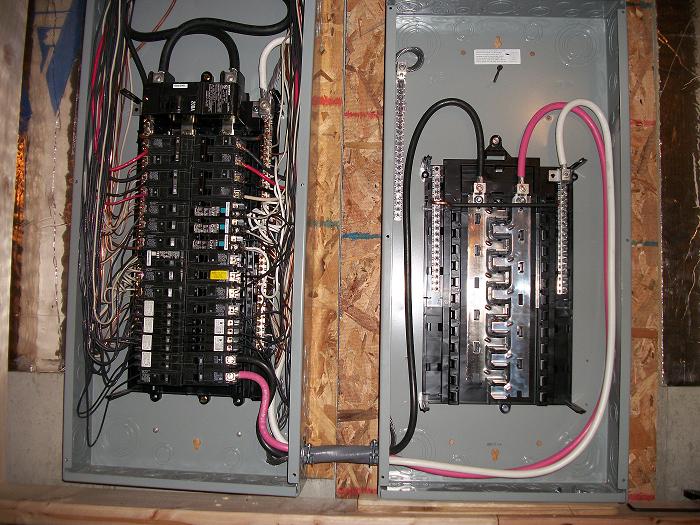

and you can simply round up to the next higher size of the breaker. Often, the result is not a common circuit breaker size. If running SER cable from a main panel to a 100 amp sub panel, why does it seem like everyone uses 2,2,2,4 aluminum SER and not the 1,1,1,3 as per the 75☌ column (breaker terminal rating) of 310.15 (B) (16). Once there, click on the “free access” tab and select the applicable year of NFPA 70 (National Electrical code). To calculate the breaker size, simply divide the adjusted wattage by 240 volts to find the rated amperage needed for your subpanel. I’ve found multiple threads discussing this topic but I can’t seem to find a straight answer.
#100 AMP SUB PANEL WIRE SIZE CHART CODE#
See the actual NEC ® text at NFPA.ORG for the complete code section. Step 3, compare results from the first two steps and pick the larger wire which is 3 AWG copper.īelow is a preview of the NEC ®. Select a THW copper conductor from Table 310.15(B)(16) that can carry 90 amps from the 75° column (#3 AWG). Select a THW copper conductor from Table 310.15(B)(16) that can carry 75 amps from the 75° column (#4 AWG). Battery capacity is typically measured in Amp-hours (Ah) or milliamp-hours (mAh), although Watt-hours (Wh) is occasionally used. Step 1, take 60 amps X 125% which = 75 amps. See the example below for the 3-step method to properly size a feeder:Įxample: What minimum size copper type THW feeder conductors are required to supply a 60-amp continuous load where the feeders are installed in an area where the ambient temperature is 125☏? (Assume all terminations are rated 75☌ for simplicity)

Now, you may question what you should use for your wiring installation and what are the advantages and disadvantages of one wire type from another.

The code language added to this section in the 2014 NEC ® is not a new concept. A 100 amp sub panel wiring size requirement is 4 AWG for copper wires and 2 AWG for aluminum wires. I'm at a point where I'll just have the electric company run 200A service, but really hate paying an extra meter fee every month.Īny idea what wire size would make sense on this? Thank you in advance.Code Change Summary: New code language was added to clarify how a feeder is sized. So, as you can see, I'm totally confused ont the wire size. I've come across wire size calculator telling me to run 250mcm. I went to the building department and they said I could run 2-2-2-4 URD Al which seems really light for a 500 ft run.

I've asked an electrical guy and he said to run 1/0 MHF Al. When it's that cold, I won't be working in the barn drawing a heavy load. I'm planning on using the one house panel which powers a 60 Amp resistive heating element in the furnace when it's too cold for the heat pump to work.
#100 AMP SUB PANEL WIRE SIZE CHART INSTALL#
My house has (2) 200A breaker panels in it and I want to install a 100A breaker panel in the barn to run various tools including an Air Compressor (20A 240V), pond aerator and fountain (1/2hp - 6A 120V), and a 50A motorhome receptacle. I checked out the forum here and there's a lot of good information, but I'm not sure how the distance affects the wire size? The distance is 500 feet which is the part I think causing confusion. I am so confused on the wire size I need to run for a 100 amp breaker panel in my barn being run underground from my 200 amp panel in the house.


 0 kommentar(er)
0 kommentar(er)
